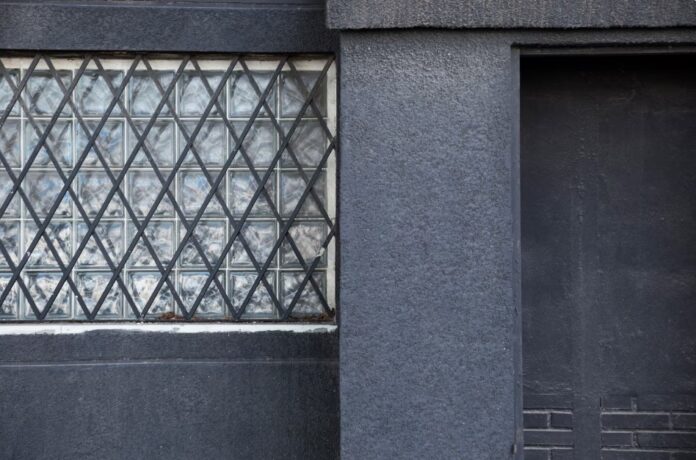In Miami’s vibrant and ever-evolving skyline, building exteriors do more than protect structures—they define them. For property owners, architects, and developers seeking a standout façade, engaging a professional façade installer is paramount. This guide explores two cornerstone approaches—perforated metal panels in architecture and custom façade fabrication—to help you navigate installation strategies, material choices, and design insights tailored to Miami’s climate and aesthetic spirit.
Introduction
Selecting the right partner for façade installation goes beyond hires and budgets. An experienced installer bridges the gap between vision and reality, ensuring that innovative materials perform reliably through hurricanes, humidity, and coastal conditions. Understanding the latest trends, such as perforated metal panels in architecture, and leveraging custom façade fabrication, empowers stakeholders to create façades that impress and endure. Throughout this post, we reference in-depth articles and service offerings that demystify these processes, adapted for Miami’s unique demands.
The Role of a Professional Facade Installer
A façade installer brings specialized expertise to every project phase—from initial consultation through maintenance planning. Key responsibilities include:
- Site assessment and preparation
Evaluating existing structures, anchorage points, and moisture barriers to determine installation strategy.
- Coordination with design and engineering teams
Translating architectural concepts into detailed shop drawings that meet local codes and performance requirements.
- Precision installation
Aligning panels, managing tolerances, and securing systems to resist wind uplift and ensure weathertightness.
- Quality assurance and commissioning
Conducting post-installation inspections, leak tests, and aligning integrated elements like lighting or signage.
Choosing an installer with a proven track record for sophisticated assemblies—especially those involving perforated metal panels in architecture—reduces risk and streamlines timelines.
Understanding Perforated Metal Panels in Architecture
Perforated metal panels are revolutionizing contemporary façades by blending aesthetic dynamism with functional performance. These panels are typically crafted from aluminum, steel, or high-performance alloys, each precision-cut with patterns ranging from consistent geometric perforations to organic motifs.
Material Benefits and Miami Considerations
- Corrosion resistance
Coastal environments demand marine-grade coatings or anodized finishes to withstand salt-laden air.
- Weight-to-strength balance
Aluminum offers lightweight properties, reducing structural loads and easing installation, while stainless steel delivers extra rigidity for large spans.
- Heat and glare control
Strategically sized perforations provide solar shading, cutting down cooling loads—a crucial advantage under Miami’s intense sun.
Design Flexibility and Visual Impact
Perforation patterns transform façades into living canvases. By adjusting hole diameter, spacing, and layout, designers can:
- Create layered shadow play that animates building exteriors as sunlight moves.
- Integrate branding elements, such as silhouetted logos or abstract representations of local motifs (e.g., palm fronds, ocean waves).
- Blend transparency and privacy—ideal for mixed-use projects needing both visual connection and screening.
Flexible mounting systems allow panels to float over glazing or anchor to rainscreen supports, offering clean lines and concealed fasteners.
Embracing Custom Facade Fabrication
Where off-the-shelf modules fall short, custom façade fabrication steps in. This end-to-end service encompasses concept validation, engineering, precision manufacturing, and on-site integration.
Collaborative Design and Engineering
A full-service approach begins with collaborative charrettes between architects, engineers, and fabricators:
- Developing 3D models to simulate wind loads, thermal performance, and water infiltration.
- Refining panel dimensions, joint details, and attachment interfaces for maximum reliability.
- Coordinating with structural engineers to design support frames that align with building geometry and code requirements.
Precision Manufacturing Techniques
State-of-the-art facilities employ CNC routing, laser cutting, and robotic bending to achieve tolerances within fractions of a millimeter. Fabrication workflows typically include:
- Digital nesting of panel shapes to maximize material yield and minimize waste.
- Automated punching for rapid perforation of thousands of holes in complex arrays.
- Integrated finishing lines for powder-coat, anodize, or specialty coatings under controlled conditions, ensuring uniform coverage and long-term UV stability.
Seamless Installation Strategy
Custom fabricators often partner with expert installers to streamline on-site assembly:
- Pre-assembled panel frames and modular hinges reduce field labor and scheduling complexities.
- Invisible clip systems, designed to accommodate thermal expansion, keep the façade flush and visually uninterrupted.
- Coordination with electrical contractors supports backlighting, LED integration, or embedded sensors for responsive façades.
Key Service Offerings for Miami Projects
When evaluating professional façade installers in Miami, look for comprehensive service packages that include:
- Project consultation and feasibility analysis
Early engagement to align design aspirations with budget and code constraints.
- Design support and engineering
Generating detailed shop drawings, structural calculations, and mock-up validations.
- Custom panel fabrication
In-house CNC machining, metal perforation, finishing, and protective treatments.
- Turnkey installation services
Site logistics, rigging, and weather-resistant sealing—coordinated by certified installers.
- Post-installation maintenance programs
Scheduled inspections, cleaning protocols, and repair kits to prolong façade life.
Many service providers outline these offerings on their articles and service pages, illustrating project workflows, case studies, and technical deep dives.
Criteria for Selecting the Right Facade Installer in Miami
Miami’s unique environment places premium value on quality and reliability. Key criteria include:
- Proven Hurricane-Resistant Installations
Look for documented projects that meet or exceed local wind-load requirements.
- Material Certification and Testing
ISO or ASTM certificates for alloy composition, coating adhesion, and corrosion resistance.
- Digital Fabrication Capabilities
CNC, laser cutting, and robotic finishing capabilities ensure precision and repeatability.
- Integrated Project Management
Dedicated coordinators who manage interactions with architects, engineers, and general contractors.
- Transparent Quality Assurance
Regular site reports, mock-up approvals, and a clear warranty structure
Project Workflow: From Concept to Completion
A professional façade installer guides clients through a structured workflow:
- Initial Discovery
On-site surveys, asset evaluation, and concept reviews.
- Design Iteration
Panel layout studies, digital renderings, and material sampling.
- Engineering Validation
Wind tunnel analyses, thermal modeling, and water infiltration simulations.
- Fabrication Planning
Nesting plans, material procurement, and production scheduling.
- Mock-Up Approval
Full-scale prototypes installed for aesthetic, performance, and interface evaluations.
- Installation and Commissioning
Precision alignment, sealing, anchoring, and final inspections.
- Maintenance Handoff
Training for facility managers, cleaning recommendations, and emergency repair kits.
Hypothetical Miami Case Studies
While avoiding specific business names, consider these illustrative scenarios:
- Downtown Office Tower
A sleek tower clad in perforated aluminum fins that wrap corner windows, reducing glare while adding dynamic texture.
- Beachfront Condominium Entry Pavilion
A sculptural canopy of laser-cut stainless steel panels, filtered lighting, and concealed rainwater gutters.
- Healthcare Clinic Façade Renewal
Existing block walls overlaid with custom composite panels, featuring branded perforations and integrated LED backlighting for nighttime wayfinding.
Each scenario underscores the installer’s ability to tailor solutions to context—balancing aesthetics, performance, and constructability.
Maintenance Best Practices for Metal Facades
To maintain visual impact and ensure longevity:
- Routine Wash Cycles
Every six months, use soft-bristle brushes and pH-neutral detergents to remove salt and urban grime.
- Post-Storm Inspections
Check clips, sealants, and panel alignment after major weather events; tighten or replace hardware as needed.
- Protective Coating Refresh
Periodic touch-ups of powder-coat or anodized finishes mitigate fading and corrosion in high-sun areas.
- Documentation and Alerts
Digital maintenance logs with photo references help spot trends and preempt potential failures.
Conclusion
In Miami’s dynamic marketplace, façades serve as powerful brand statements and performance assets. Partnering with a professional façade installer experienced in perforated metal panels in architecture and custom façade fabrication ensures your project navigates coastal challenges, hurricane codes, and aesthetic ambitions. By prioritizing expertise, proven workflows, and comprehensive service offerings—from consultation to maintenance—you safeguard your investment and elevate your structure to a distinguished landmark in the Magic City’s ever-growing skyline.




